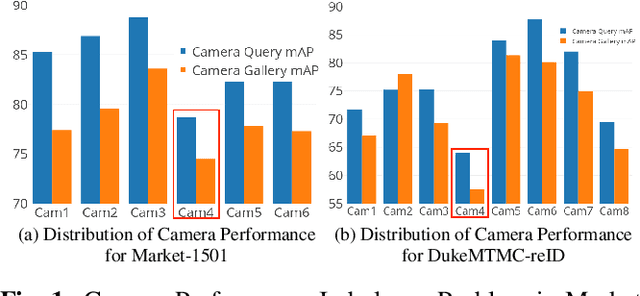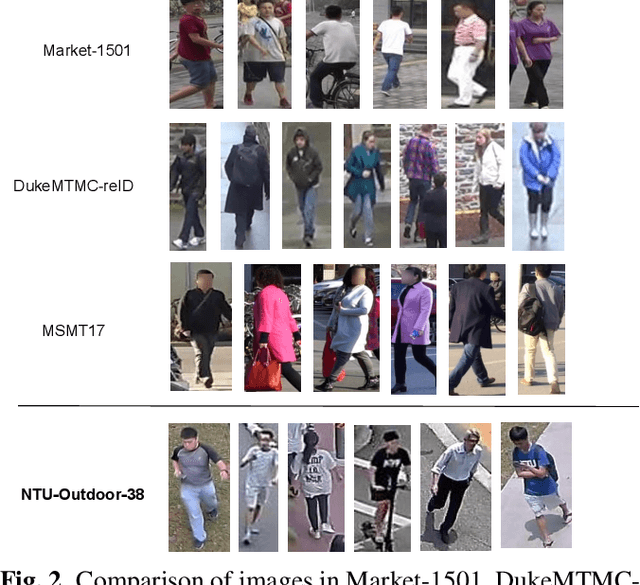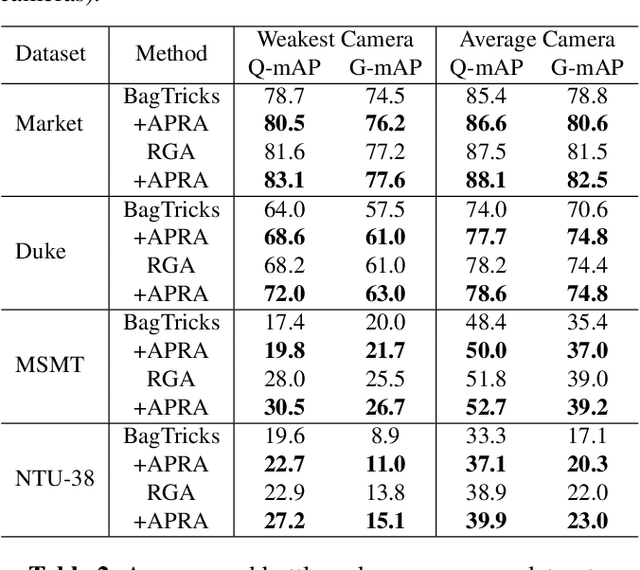Adversarial Pairwise Reverse Attention for Camera Performance Imbalance in Person Re-identification: New Dataset and Metrics
Paper and Code
Jul 04, 2022



Existing evaluation metrics for Person Re-Identification (Person ReID) models focus on system-wide performance. However, our studies reveal weaknesses due to the uneven data distributions among cameras and different camera properties that expose the ReID system to exploitation. In this work, we raise the long-ignored ReID problem of camera performance imbalance and collect a real-world privacy-aware dataset from 38 cameras to assist the study of the imbalance issue. We propose new metrics to quantify camera performance imbalance and further propose the Adversarial Pairwise Reverse Attention (APRA) Module to guide the model learning the camera invariant feature with a novel pairwise attention inversion mechanism.
* Accepted into the IEEE International Conference on Image Processing
(ICIP) 2022
 Add to Chrome
Add to Chrome Add to Firefox
Add to Firefox Add to Edge
Add to Edge